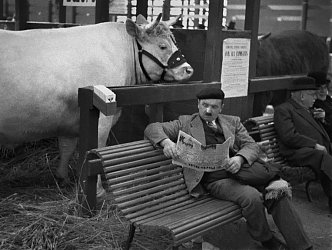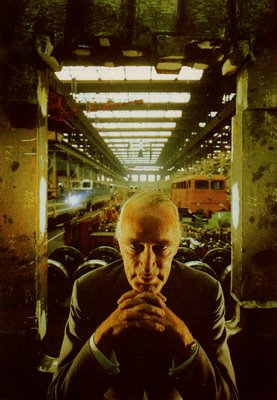
PROPUESTA DE MODELO DE ANÁLISIS DE LA IMAGEN FOTOGRÁFICA
Descripción proyecto:
Nuestra propuesta se formula para el análisis del campo de la fotografía artística, ya que es el tipo de imágenes que da el juego suficiente para poder desarrollar un estudio analítico en profundidad. Creemos que en el contexto actual es más necesario que nunca ofrecer un trayecto metodológico en el estudio de la imagen, y más concretamente en el caso de la fotografía, que contribuya a responder la pregunta “cómo significa la fotografía”.
En el análisis de una fotografía se puede distinguir una serie de distintos niveles, desde la estricta materialidad de la obra, y su relación con el contexto histórico-cultural, hasta un nivel interpretativo.
La presente propuesta de análisis de la imagen fotográfica se completa con la preparación de una base de datos de fotografías, que incluye unos 900 registros, cada uno con una breve ficha técnica, y una selección de 30 fotografías analizadas siguiendo la metodología de trabajo que hemos expuesto. El trabajo de investigación, realizado entre los años 2001-2004, está financiado por la Convocatoria de Proyectos de Investigación BANCAJA-UJI de la Universidad Jaume I, código I201-2001, dirigido por el Dr. Rafael López Lita, Catedrático de Comunicación Audiovisual y Publicidad, la coordinación del Dr. Javier Marzal Felici, Profesor Titular de Comunicación Audiovisual y Publicidad, y el Grupo de Investigación “ITACA-UJI” (Investigación en Tecnologías Aplicadas a la Comunicación Audiovisual). Todo el material puede ser consultado en la página web www.analisisfotografia.uji.es, y ha sido presentado en el I Congreso de Teoría y Técnica de los Medios Audiovisuales, dedicado en esta edición a “El análisis de la imagen fotográfica”, celebrado en Castellón los días 13, 14 y 15 de octubre de 2004.
LINK
28.11.06
ARNOLD NEWMAN
Labels: ARNOLD NEWMAN, COMPOSIÇÃO, TEORIA
23.11.06
EDWARD STEICHEN
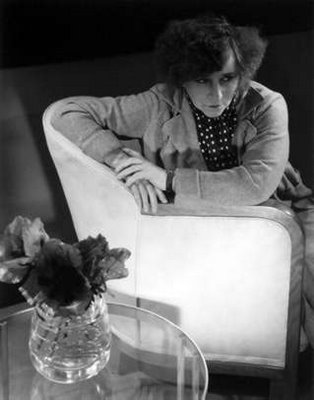
Edward Steichen (March 27, 1879–March 25, 1973) was an American photographer, painter, and art gallery and museum curator, born in Bivange, Luxembourg. His family moved to the United States in 1881 and he became a naturalized citizen in 1900.
Having established himself as a fine-art painter, in the beginning of the 20th century, Steichen assumed the pictorialist approach in photography and...
LINK
Labels: EDWARD STEICHEN, U.S.A.
LEWIS HINE

Lewis Wickes Hine (September 16, 1874 - November 3, 1940), was an American photographer. For Hine, the camera was both a research tool and an instrument of social reform.
Born in Oshkosh, Wisconsin, Hine studied sociology at the University of Chicago, Columbia University and New York University. He began his career in 1904, photographing immigrants arriving in the United States at Ellis Island in New York Harbor. In 1908, he became...
LINK
Labels: LEWIS HINE, U.S.A.
22.11.06
WALKER EVANS

Walker Evans (November 3, 1903 – April 10, 1975) was an American photographer best known for his work for the Farm Security Administration documenting the effects of the Great Depression. Much of Evans' work from the FSA period uses the large-format 8x10in view camera, which when used directly in front of a subject can create the appearance of a dispassionate viewpoint. Evans and other FSA photographers used this technique, and others, to emphasize the plight of America's poor and ...
LINK
Labels: U.S.A., WALKER EVANS
PAUL STRAND
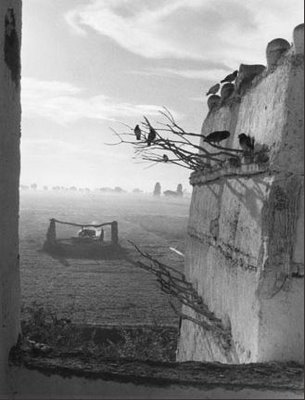
Paul Strand (October 16, 1890 – March 31, 1976) was an American photographer and filmmaker who, along with fellow modernist photographers like Alfred Stieglitz and Edward Weston, helped establish photography as an art form in the 20th century. His diverse body of work, spanning six decades, covers numerous genres and subjects throughout the Americas, Europe and Africa.
Bohemian parents, in his late teens Strand was a student of renowned documentary photographer Lewis Hine at the Ethical Culture Fieldston School. It was while on a fieldtrip in this class that Strand first visited the 291 art gallery – operated by ...
LINK
Labels: PAUL STRAND, U.S.A.
ANSEL ADAMS
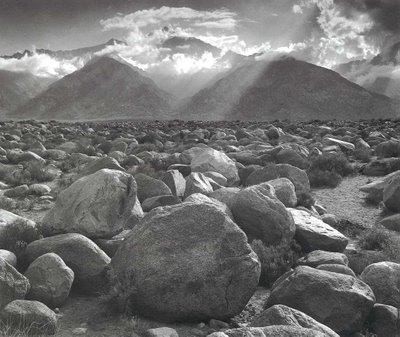
Ansel Easton Adams (February 20, 1902 – April 22, 1984) was an American photographer, best known for his black and white photographs of California's Yosemite Valley.
Adams was also the author of numerous books about photography, including his trilogy of technical instruction manuals (The Camera, The Negative and The Print). He co-founded the photographic association Group f/64 along with other masters like Edward Weston, Willard Van Dyke, and Imogen Cunningham.
He and Fred Archer are credited with creating the zone system, a technique which allows photographers to translate the light they see into specific densities on negatives and paper, thus giving them better control over finished photographs. Adams also pioneered ...
LINK
Labels: ANSEL ADAMS, U.S.A.
13.11.06
ANDRÉ KERTESZ
André Kertész (born Kertész Andor July 2, 1894 - September 28, 1985) was a Hungarian-born photographer distinguished by haunting composition in his photographs and by his early efforts in developing the photo essay. In his lifetime, however, his then-unorthodox camera angles, which hindered prose descriptions of his works, prevented his work from gaining wider recognition. His use of symbolism also became unfashionable later in his life. Kertész is now recognized as one of the seminal figures of photojournalism.
Born in Budapest, the son of a bookseller, Kertész taught himself how to use a camera and had his first photos published while a member of the Austro-Hungarian army during World War I. Even as early as 1914 (e.g. "Eugene, 1914") his distinctive and mature style was already evident.

Kertész emigrated to Paris in 1925, changed his first name from Andor, and became acquainted with members of the Dada movement. One of them dubbed him "Brother Seeing Eye", an allusion to a medieval monastery where all the monks were blind except one. His greatest journalistic collaboration was with the French editor and publisher Lucien Vogel, who ran his photographs without explanatory prose. He created portraits of (among others) the painters Mondrian and Marc Chagall, the writer Colette, and film-maker Sergei Eisenstein. In Paris he found critical and commercial success, and he was the first photographer in the world ever to have a one-man exhibition (1927). He was a mentor to many famous names in photography; Henri Cartier-Bresson said, "We all owe something to Kertész".
In 1936 Kertész and his wife Erzsebet (later altered to Elizabeth) went to the United States to escape the increasing tension in Europe that was leading to World War II. The Condé Nast Publishing empire had signed Kertész to a long-term contract, which meant he spent most of his time photographing famous homes for House & Garden magazine. However, his personal photographic style did not mesh well with the straightforward fashion photography the American public (and magazines) expected. He continued to exhibit his individual work as best he could but his reputation slowly faded, and he became disillusioned.

His work did not appear in Steichen's famous The Family of Man show at the Museum of Modern Art, but in 1964, soon after John Szarkowski became the photography director at the museum, Kertész had a solo show which relaunched his career and reputation. He caught the mood of the times and became something of an elder statesman to the photographers of the late 1960s and early 1970s. They had been seeking to validate a tradition of documentary/art photography through linking it back to the Paris photographers of the 1920s and 1930s.
By the mid-1970s he was showing his work in galleries all over the world. He continued working very productively into old age, and was experimenting with instant Polaroid photography shortly before he died.
LINK
Labels: ANDRÉ KERTESZ, HUNGRIA, U.S.A.
10.11.06
DIANE ARBUS

Arbus was born in New York City into a wealthy Jewish family, in which she was overshadowed by her older brother, the poet Howard Nemerov. She attended The Fieldston School. She fell in love with future-actor Allan Arbus at age 14, and married him soon after turning 18, despite her parents' objections. When Allan started training as a photographer for the US Army, he taught Diane his lessons. As a husband-wife team, the Arbuses became successful in the fashion world, with Allan as photographer and Diane as stylist. As Diane began to take her own photographs, she took formal lessons with ...
LINK
Labels: DIANE ARBUS, U.S.A.
9.11.06
EDWARD WESTON

Edward Weston was born in Highland Park, Illinois on March 24, 1886. In 1902, he received his first camera for his sixteenth birthday, a Kodak Bull's-Eye #2, and began taking photographs in parks in Chicago and at his aunt's farm. The young Weston met with quick success, and his photographs were already being exhibited at the Chicago Art Institute merely a year later, in 1903.
In 1906, Weston moved to California, where he ultimately decided to stay and pursue a career as a photographer. He married his first wife, Flora May Chandler, in 1909, and together they had four sons: Chandler (1910), Brett (1911), Neil (1914) and Cole (1919). In 1911, Weston opened his first photographic studio in ...
LINK
Labels: EDWARD WESTON, U.S.A.
8.11.06
EUGÈNE ATGET
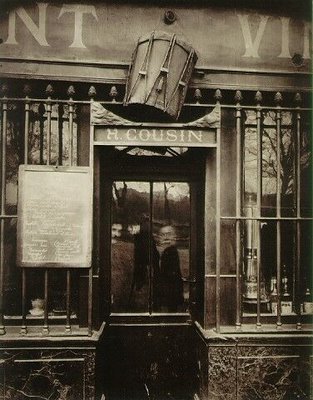
Eugène Atget (1857‑1927) was a French photographer noted for his documentary photographs of old Paris.
Born in the French city of Libourne, he is orphaned at seven and was raised by his grand-parents. In the 1870s, after finishing his education, Atget briefly became a sailor and cabin boy on liners in the Transatlantic. After shipping on several voyages, Atget became an actor, more specifically, a bit player, for a second-rate repertory company, but without much success. He finally settled in Paris, as a painter-turned-photographer in the 1890s. Despite Atget's limited background in the visual arts, he saw photography as a source of income, selling his photographs to artists in the nearby town of Montparnasse. He advertised his photographs as "documents for artists." It was common practice at the time for painters to ...
LINK
Labels: EUGÈNE ATGET, FRANCE
MAN RAY
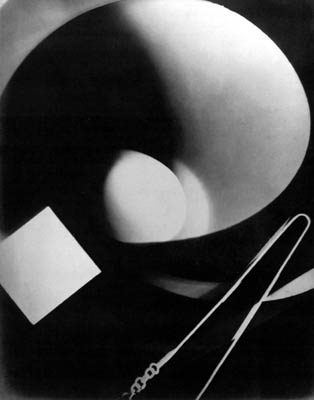
Man Ray (August 27, 1890–November 18, 1976) was an American artist who spent most of his career in Paris, France. Perhaps best described simply as a modernist, he was a significant contributor to both the Dada and Surrealist movements, although his ties to each were informal. Best known in the art world for his avant-garde photography, Man Ray produced major works in a variety of media and considered himself a painter above all. He was also a renowned fashion and portrait photographer.
While appreciation for Man Ray’s work beyond his fashion and portrait photography was slow in coming during his lifetime, especially in his native United States, his reputation has grown steadily in the decades since. In 1999, ARTnews magazine named him one ...
LINK
7.11.06
JOHN GAY
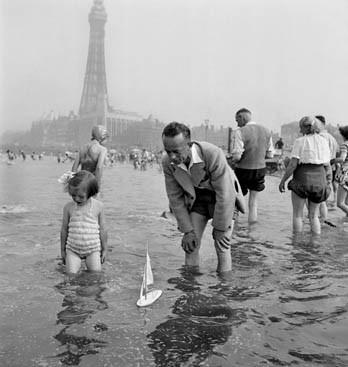
John Gay was born Hans Gohler in Karlsruhe, Germany in 1909. After attending art college in Paris he became a commercial photographer in his native country, but in 1933 left for a new life in England after being outraged by the treatment of many of his Jewish friends when the Nazis came to power.
In England he continued his photographic career, finding work as a commercial photographer, before serving with the Pioneer Corps from 1939 until the end of the Second World War.
Following his marriage to Marie Arnheim in 1942, the couple settled in ...
LINK
RUTH BERNHARD
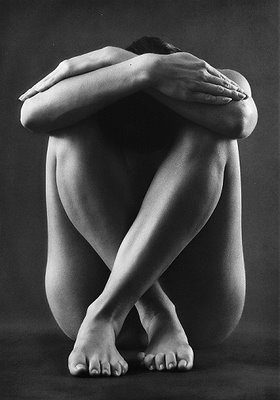
Ruth Bernhard (October 14, 1905) is an American photographer who was born in Berlin. Her father, Lucian Bernhard, is known for his poster and typeface design.
Bernhard studied at the Berlin Academy of Art from 1925–7
In 1927 Bernhard moved to New York, where her father was already living. She worked as a assistant to Ralph Steiner in Delineator magazine, but he terminated her employment for indifferent performance. She used her severance pay to finance her own photographic equipment. In 1935, she chanced to meet Edward Weston on the beach in ...
LINK
Labels: RUTH BERNHARD, U.S.A.
BERENICE ABBOT

Berenice Abbott (July 17, 1898 – December 9, 1991), born Bernice Abbott, was an American photographer best known for her black-and-white photography of the architecture and urban design of New York City during the 1930s.
Abbott was born in Springfield, Ohio and was brought up there by her divorced mother. She attended Ohio State University, but left in early 1918.
In 1918 she moved with friends from OSU to New York's Greenwich Village, where she was "adopted" by the anarchist Hippolyte Havel. She shared a large house on ...
LINK
Labels: BERENICE ABBOTT, U.S.A.
